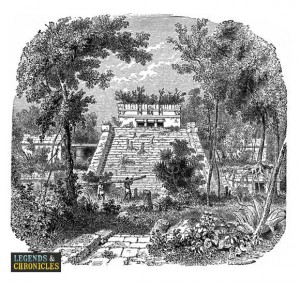http://www.legendsandchronicles.com/ancient-civilizations/the-ancient-aztecs/aztec-architecture/
eloisesfigueroa.blogspot.com
Building materials used by the ancient Aztecs
The Aztecs used primitive tools like stones, chisels and blades for their construction, rudimentary tools by modern standards, but it didn’t hold the Aztecs back. They focused on building strong foundations since the soil on their ground was susceptible to sinking due to the warm and often damp climate. The Aztecs used a colorful and easy to cut volcanic stone called tezontle to form the base of their constructions. The Aztecs additionally used local stone materials like rubble and limestone that were found in the area, and these were often traded as well.Aztecs mostly carved their stones for decorations, giving their buildings and materials a unique look that added texture and visual punch to their buildings. The carvings were naive for the most part with a very two dimensional quality They also were also keen on local wood materials and used pine and oak wood from the forests for their beams and doors.
Symbols incorporated into Aztec architecture
Aztec architecture was full of symbols as we mentioned earlier, the Aztecs used symbols to add decoration, style and incorporate their beliefs into their architecture. Here are some of the figures that were commonly used in Aztec buildings and architecture and what they represent.- Eagle – The eagle was representative of the sun and of warriors
- Serpents – Serpents represented water or fire
- Conch shell – The Conch shell was a important symbol of fertility
- Frogs and sea creatures – Represented Tlaloc Symbols
Aztec temples and shrines
Some of the most powerful and iconic Aztec architecture is of course the striking Aztec temples. The temples in Mesoamerican and in particular with the Aztecs were seen as a way to get closer to the gods. The Aztec people built temples and pyramids in numbers, from the largest temple, the Templo Mayor to the Sun and Moon Pyramids which still stand proud today.These Aztec pyramids and temples always had double staircases that faced west towards the sun. The temples share similarities with the Egyptian pyramids but unlike Egyptian pyramids, the tops of the Aztec temples were flat. On top here would be a block made for sacrifices and there would be idols representing the god to whom the temple was built for, skilfully carved too.
Inside these majestic Aztec temples, the walls were decorated with paint and statues. Their staircases comprised of 13 steps which had astronomical influence. At the end of these staircases were dragon like figures called stone serpents heads. They were commonly thought to have been built to ward off evil spirits. There would also be a highly revered eagle, the nahual of Huitzilopochtli-Tonatiuh. These are common in most of the Aztec temples and can be seen at Tepoztlan temple, the temple of the Feathered Serpent in Xochicalco, the round temple of Cempoala, and the temple of Ehecatl in Calixtlahuaca.
Similarly shrines were built by the Aztecs and sometimes dedicated to a specific God. These were places of worship or a place for offerings. The shrines found honoured the Sun god, the Eagle and the Jaguar.
